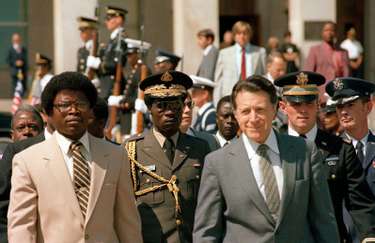
In the 1980s, Samuel K. Doe was the CIA’s boy. He was one of Africa’s worst rulers, who provided bases used for subversion campaigns across Africa and upheld the interests of Firestone Rubber.
When Doe lost his utility, the CIA supported Charles Taylor who helped trigger Liberia’s ruinous civil war in the 1990s.
[In 1975, CIA whistleblower Philip Agee wrote an exposé of the CIA called Inside the Company, which detailed the Agency’s criminal activities in countries that he had worked—Ecuador, Uruguay, and Mexico. These criminal activities included illegal surveillance, financing of right-wing extremists, incitement of violence, sponsorship of illegal coups and empowerment of government officials who tortured and massacred political leftists. Written in Agee’s spirit, this series will spotlight sordid episodes in the CIAs history. We aim to shed fresh light on well-known CIA operations, spotlight more obscure ones, and examine how the CIA has corrupted American democracy.—Editors]
On April 12, 1980, just before midnight, soldiers loyal to Master Sergeant Samuel Kanyon Doe attacked the executive mansion and shot and killed Liberia’s President William R. Tolbert, Jr. (1971-1980) in front of his family.
Afterwards, government ministers were walked around Monrovia in the nude, and then summarily executed by a firing squad on the beach.
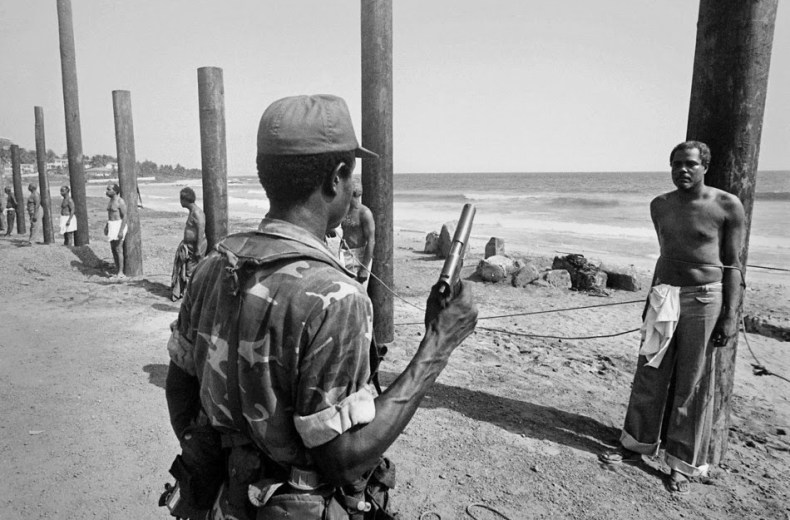
Just 28 years old at the time, Doe was an ethnic Krahn from eastern Liberia with only a fourth-grade education. He had received military training from the U.S. after enlisting in the Liberian army in 1975.
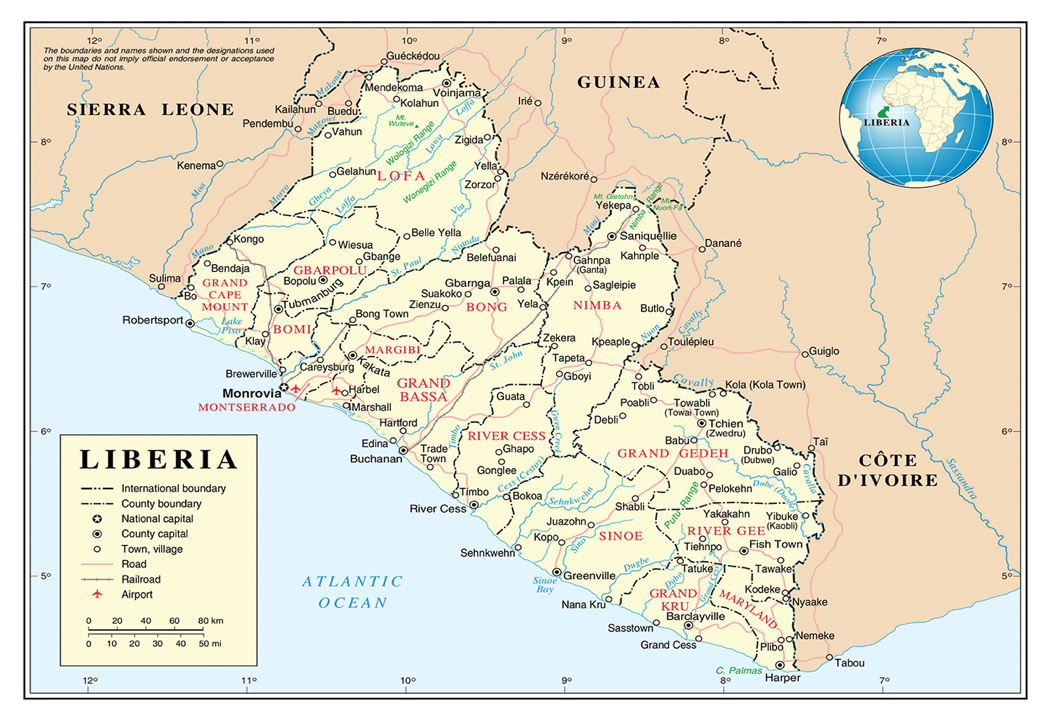
Doe’s base was drawn from the Krahn and other indigenous Liberians who felt marginalized under the rule of African-American settlers who helped establish modern Liberia after being shipped there by slave owners and escaping slavery with the aid of the white-led American Colonization Society (ACS).
Doe stated that a purpose of the coup was not merely to rid Liberia of the corrupt Tolbert regime, but to “liberate the indigenous people from enslavement by the Americo-Liberians.”
However, Doe mismanaged Liberia’s economy while building himself sumptuous country estates and was perceived by Liberians as a Western puppet.
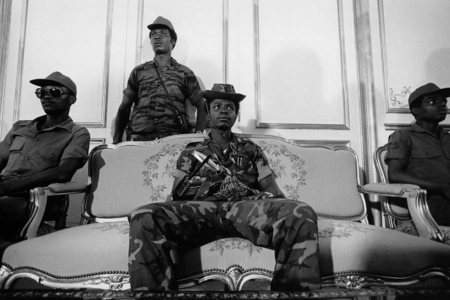
He worked to eliminate all dissent, using fake coup attempts as an excuse, and converted the army into a tribal militia for his protection.
The U.S. at that moment realized that it had created a bloodthirsty monster but, like Frankenstein, could not control him or the damage that he caused.[1]
Betraying an Ally
Liberia’s constitution was written at Howard University and its flag was inspired by the U.S. flag.
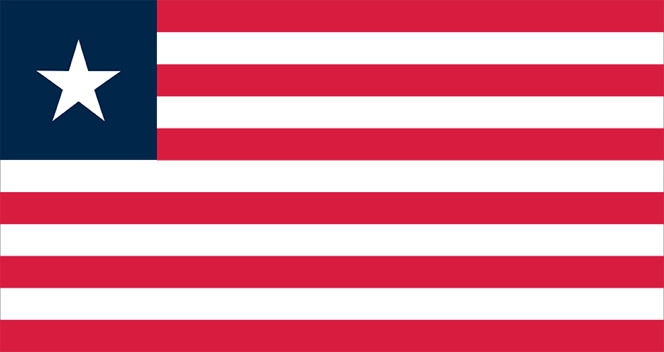
During World War II, Liberia provided a base for Allied military operations and supplied natural resources, especially rubber, to assist in the defeat of Nazism.[2]
Instead of displaying gratitude, U.S. policy makers subsequently worked to recolonize and then destroy Liberia—an important regional headquarters for the Central Intelligence Agency (CIA).
The destruction was facilitated in part by the Reagan administration’s decision to provide Doe’s criminal regime with $500 million in aid—more money than the U.S. had given Liberia in its entire history—while sending Green Berets on training missions along with a new Navy ship.[3]
Additional money was given by Nigeria’s military leader Ibrahim Babaginda (1985-1993), whom Liberians believed served as an American conduit.
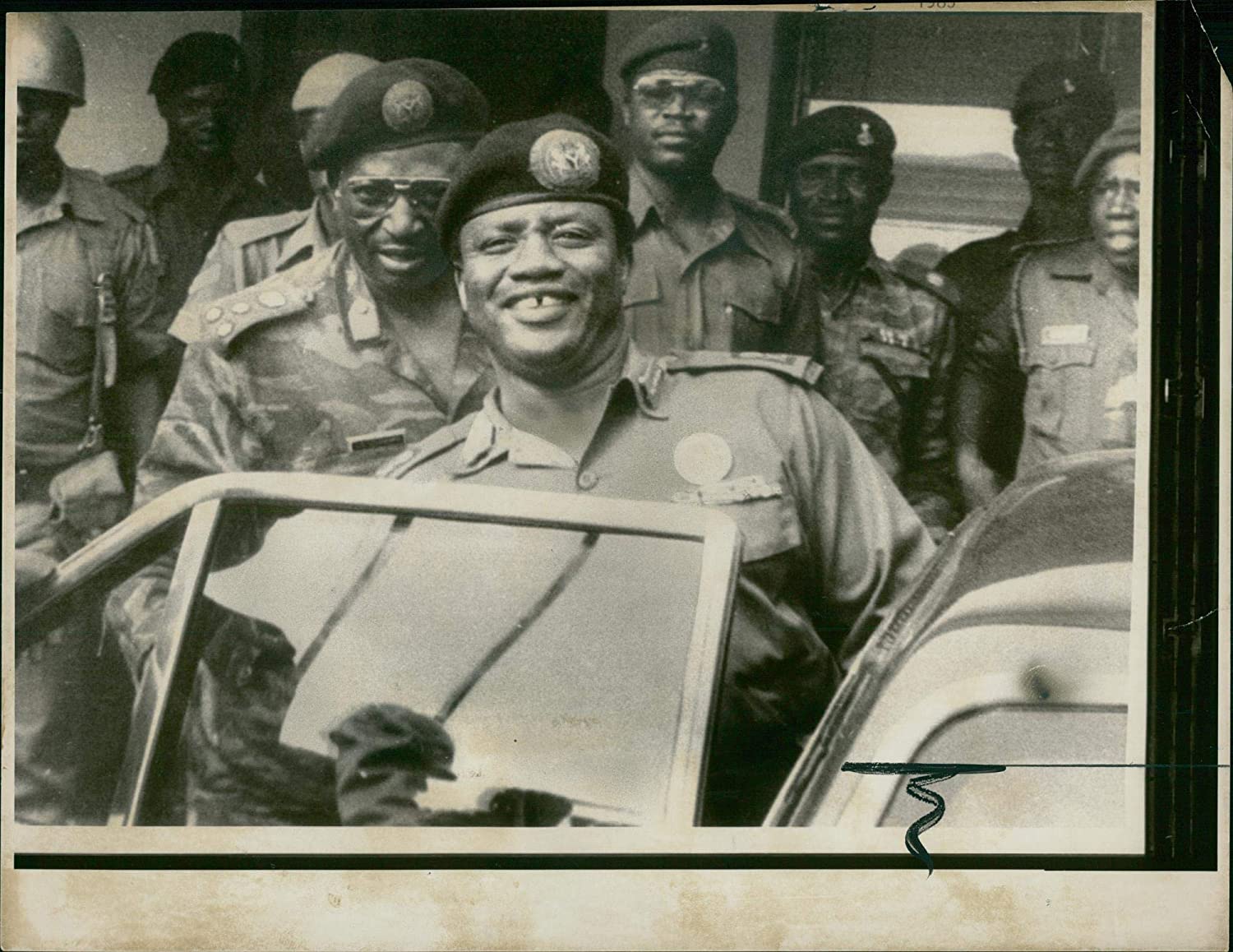
Doe used his riches to acquire technical weapons that were used to carry out a reign of terror. Machinery was set up for a vast money-laundering operation, leading to an orgy of corruption. Top officials even raided the Bank of Liberia and took all the cash for themselves.[4]
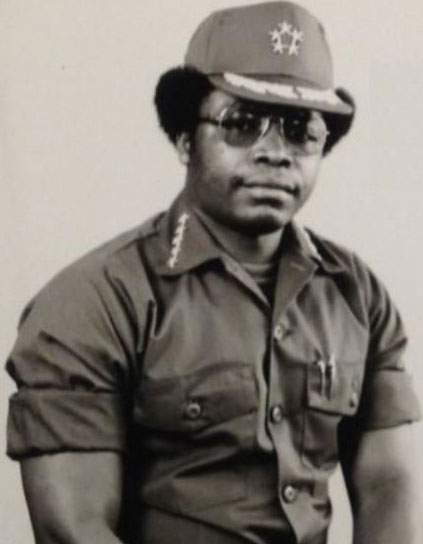
Doe sustained U.S. backing because he reversed Tolbert’s policies by privatizing state-owned enterprises and cutting relations with Libya and the Soviet Union.[5]
The U.S.’s primary interest in Liberia was to protect its “national security” facilities near Monrovia for which it paid a ridiculously low rent. These included a large diplomatic-intelligence community relay station, Voice of America (VOA) broadcast center, and Coast Guard navigation station.[6]
The U.S. further aimed to exploit Liberia’s natural resources and promote the interests of Firestone Rubber, which had set up vast rubber plantations in Liberia beginning in 1926 when it leased a million acres of land for 99 years at 6 cents an acre.[7]
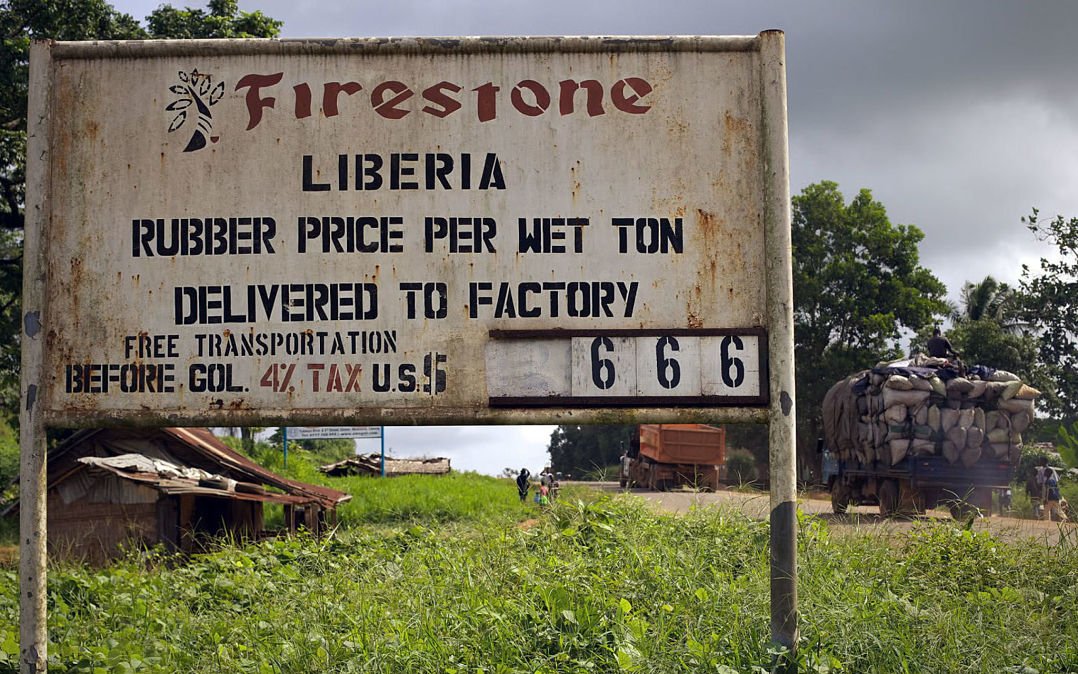
Tolbert was an effective leader of the True Whig Party who liberalized Liberia’s political structure, pushed for greater economic self-reliance, and introduced free education and health care, social security and welfare programs and a progressive tax system.
Tolbert further took measures to undermine Firestone and other foreign corporation’s ability to exploit Liberian natural resources, stating that “natural resources are being steadily depleted,” the “environment is being polluted” while our people receive insufficient compensation.”[8]
To try and offset this situation, Tolbert established—a month before his death—an agreement with Presidents Ahmed Sékou Touré of Guinea and President Léopold Senghor of Senegal to consolidate Africa’s natural resources into a “commodity cartels” combine which would have managed/administered/regulated prices and outputs of Africa’s mineral and other natural resources, à la OPEC (Organization of Petroleum Exporting Countries).
Tolbert/Touré/Senghor were envisaging an international economic order—sustained by the General Agreement on Tariffs and Trade (GATT) Uruguay Round—which would have been along parallel lines with the Non-Aligned Movement.
The Carter administration in response offered President Tolbert more than $100 million for social programs while asking for an extended U.S. military and intelligence oversight of Libyan leader Muammar Qaddafi and other Arab League elements, and placement of a major U.S. military facility in Liberia equivalent to the modern-day AFRICOM.
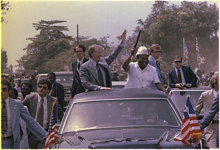
Tolbert, however, spurned Carter, setting the gears of the U.S. national security establishment against him. Tolbert angered the U.S. by further a) refusing it round-the-clock access to bunkering facilities at Liberia’s international airport, b) calling for African unity (he was a pallbearer at Pan-African hero Kwame Nkrumah’s funeral), and c) severing ties to Israel.
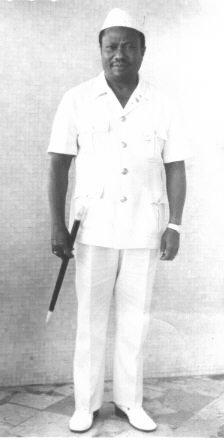
According to Tolbert’s son Winston, the U.S. government looked at Tolbert “as a radical, a leftist, and that he was not in support of their Cold War policies … he was an irritant to the American establishment.”
The CIA under the direction of Stansfield Turner (1977-1981) tried to undermine Tolbert by promoting smear campaigns and propaganda against him and supporting the Progressive Alliance for Liberians (PAL), a pseudo left-wing anti-Marxist group founded by Liberian students from the United States in New Jersey headed by Gabriel Backus Matthews, who became Doe’s first Minister of Foreign Affairs.[9]
A frequent guest of the U.S. embassy in Monrovia, Matthews bore a grudge against Tolbert because he had been dismissed from the Liberian consulate in New York as a result of alleged financial improprieties.
Togba-Nah Tipoteh, leader of the Pan-Africanist Movement for Justice in Africa (MOJA) and Minister of Economic Planning in 1980-1981, claimed that Matthews was “a paid agent of the CIA, at the level of $25,000 a month.”[10]
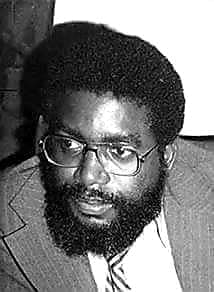

Wesley Johnson, the former Vice Chairperson of PAL and later Liberia’s ambassador to the UK under President Ellen Johnson Sirleaf (2006-2018), stated that many in PAL were naïve and did not see the danger to a CIA connection. To the leadership of PAL, the people in the CIA “were like our friends.” Communication with the Agency, he noted took place
“through telephone . . . and visits, personal talks in the United States and in Liberia, through letters, but coded letters . . . [so once when] a message reached the government they could not decode it . . . only the executive members knew what was in the messages . . . much of the knowledge was divided into cells— compartmentations—one cell would not know what another cell knew . . . we knew the coup would come but we didn’t know when or how it would take place.”
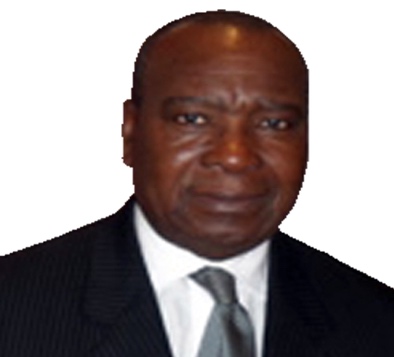
Rice Riots
To help lay the groundwork for the coup, the PAL coordinated “rice riots” which badly undermined Tolbert’s credibility after his Minister of Agriculture proposed raising the price of subsidized rice.
However, Tolbert’s government had enabled Liberians to purchase imported rice for well below market value, and subsidized rice cooperatives and mills that put the country back on the path of self-sufficient rice production, breaking the back of a monopoly on rice production held by Firestone and the U.S. government.[11]
According to Leonard DeShield, Chief of Protocol prior to the April 1980 coup and his wife Sadie, the rice protest was a “carefully orchestrated affair intended to force Tolbert out of office,” which the U.S. embassy was suspected of being behind.[12]
Wikipedia reported that it “degenerated into a disorderly mob of riot and destruction.”
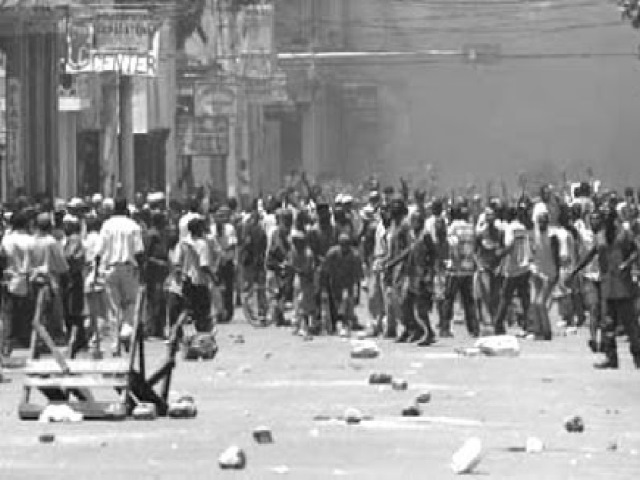
Dozens were killed and Tolbert relied on Sekou Touré to restore order. Afterwards, Tolbert accused Matthews of masterminding a coup, and charged him with sedition.[13]
Tolbert stated that the agitation was “fomented by covert and overt opponents to our policies” and held “the true objective of the illegal and diabolical action that was to create a civil disturbance so as to adversely affect our economy and destabilize our government.”
Weeks before, mercenaries had slipped into Liberia and planted anti-Tolbert stories in the marketplaces and other strategic points.[14] Fake blood was also spilled to make it look like Tolbert had orchestrated a massacre.[15]
The End of the Tolberts—a CIA Plot?
In April 1975, Tolbert’s brother Stephen—a dynamic agricultural expert and entrepreneur who made poultry and fish accessible to most Liberians and pushed for strong measures against Firestone to limit its exploitation—died in a mysterious plane crash.[16]
This was the beginning of the end for William as Stephen helped his brother as a Cabinet-level economic adviser and with security, according to Winston Tolbert.

The Nigerian press suggested that the CIA had tinkered with Tolbert’s plane, though no foul play was ever proven.
In her autobiography, President Tolbert’s widow, Victoria, noted that her husband’s killers exclaimed they would receive a $25,000 bounty for their handiwork—which was likely offered by the CIA.
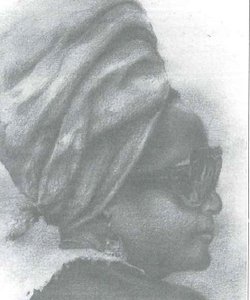
Asked if the 17 soldiers were capable of carrying out the coup alone, James Dennis, the brother of Liberia’s Foreign Minister under Tolbert, Cecil, who was killed in the coup, told an interviewer, “No way!”
Dennis added that his brother’s secure phone line at the Foreign Ministry was cut, something that he does not think Doe’s low-ranking soldiers were capable of carrying out on their own.
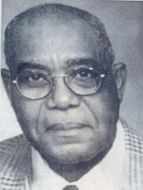
Dennis’s suspicions were also aroused by a neighbor, a U.S. Embassy employee, who Dennis believes was a CIA agent, who reported at around 2:00 a.m. that the coup was successful. To Dennis, this indicated that the U.S. Embassy was in close contact with those leading the assault.
William Tolbert III notes that Samuel Doe, the figurehead of the coup, was sleeping on the grounds of the Executive Mansion while the assault unfolded. He asks, “if President Doe did not kill Dr. Tolbert, who did?”
Emmanuel Bowier, Doe’s Minister of Information, observed that the local rumor mill alleged that a gravely wounded Caucasian in military fatigues was seen outside the Executive Mansion during the coup, marking him as the probable secret killer. Some suggested that the man in the mansion yard was an American, though his existence and identity remain unverified.
“An Endearing Boy”
After Doe took over, the head of the U.S. military mission in Liberia, Col Robert Gosney, deployed U.S. soldiers into the streets of Monrovia to help restore law and order.
The U.S. embassy assigned advisers to key Liberian ministries, including the Ministry of Defense, in a blatantly neo-colonial arrangement.[17]
Leonard and Sadie DeShield reported that the CIA became the dominant force in Doe’s administration and began a massive campaign to consolidate Doe’s power.[18]
In August 1982, Doe was warmly welcomed by President Reagan at the White House, even though just days before he had presided over the execution of five of his former comrades.
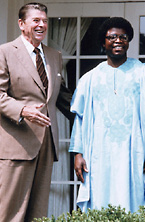
U.S. investment in Liberia at the time totaled almost half a billion dollars.
Reagan conveyed his ignorance of African affairs when he called Doe “Chairman Moe.”[19]
Doe pleased his hosts by embracing neo-liberal economic policies, stating that his government would promote “private sector investment.”
At Georgetown University, Doe conveyed his intention to work closely with the International Monetary Fund (IMF) and to “avoid unnecessary and undue interference in the affairs of the business community,” while cutting back on the public sector.[20]
Reagan’s ambassador, William L. Swing, referred to Doe affectionately as “an endearing boy.”
These comments were disturbing not only because of Doe’s brutal record of suppressing dissent, but also because they displayed a racist and colonial mentality in which an African head of state could be characterized as a mere boy.
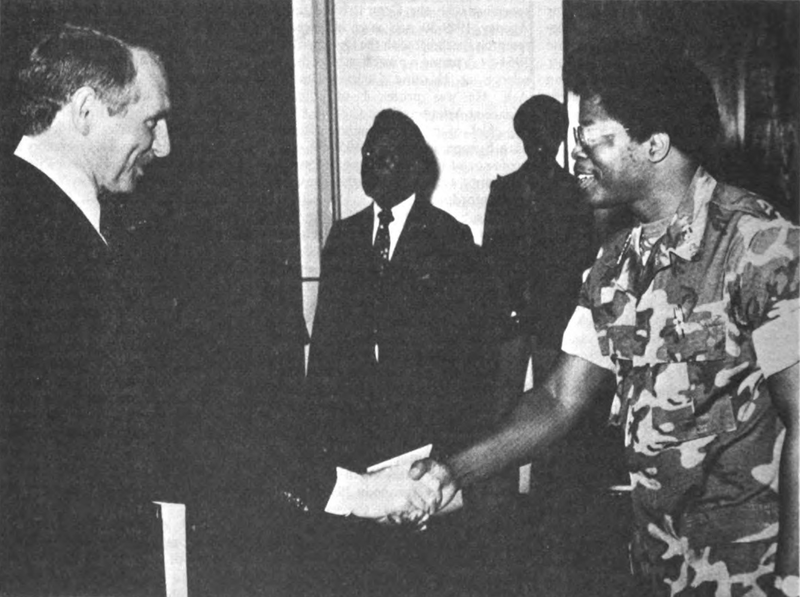
Deadly Clandestine Operations
Besides beneficial terms for Firestone and maintenance of low rent for its “national security” facilities, the U.S. under Doe had secured unlimited access to Roberts International Airport, which was used to send military equipment to anti-communist rebels in Angola and to support other clandestine operations throughout Africa.[21]
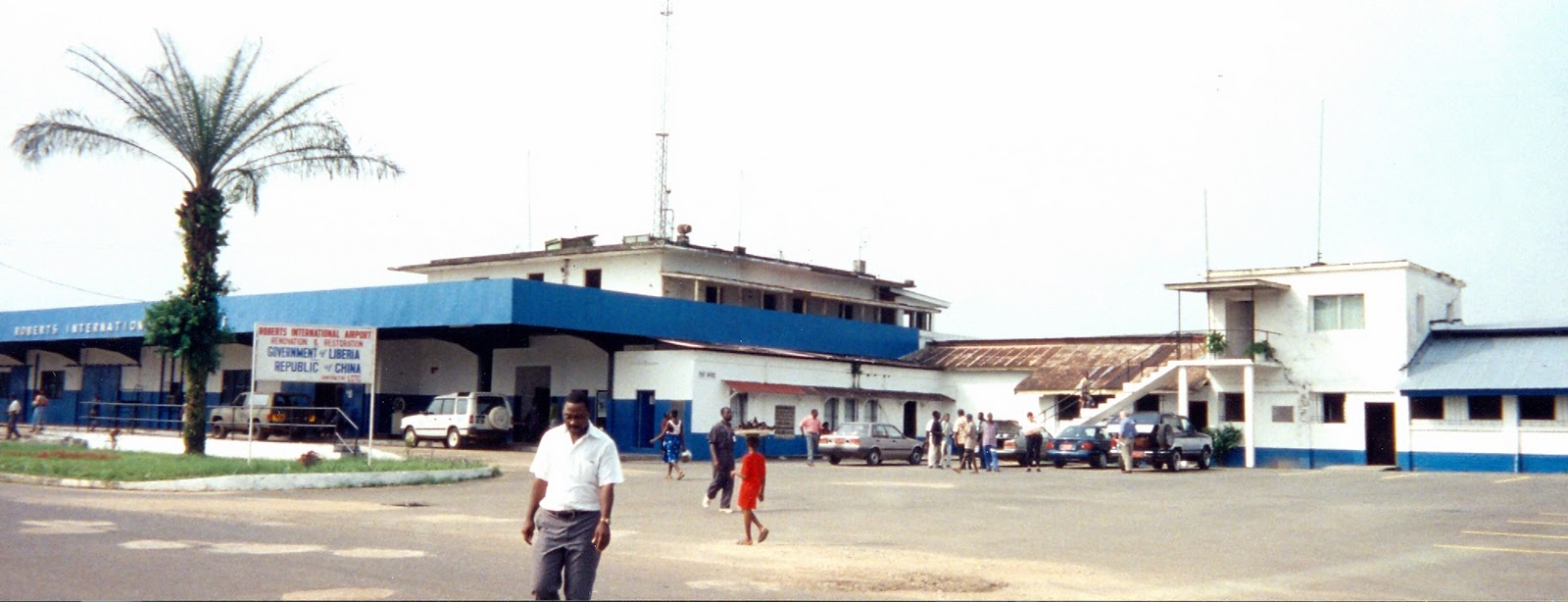
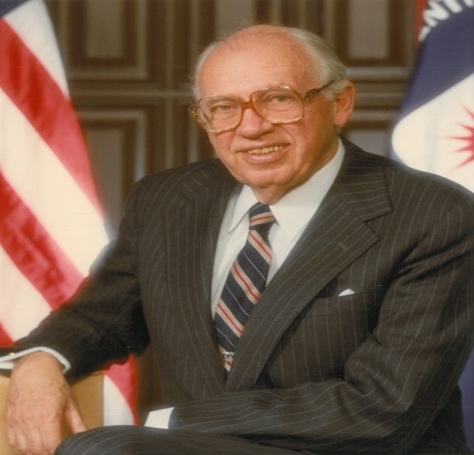
As part of a quid pro quo, CIA Director William Casey selected Doe as one of twelve heads of state to receive U.S. support from a special security assistance program, according to Washington Post journalist Bob Woodward.[22] Through this program, the CIA trained Doe’s personal security forces.[23]
Doe returned the favor to the Agency by allowing it to use Liberia’s communications facilities in covert operations supportive of Chad’s leader, Hissène Habré (1982-1990), who had ousted his Libyan-backed rival, Goukouni Oueddei.
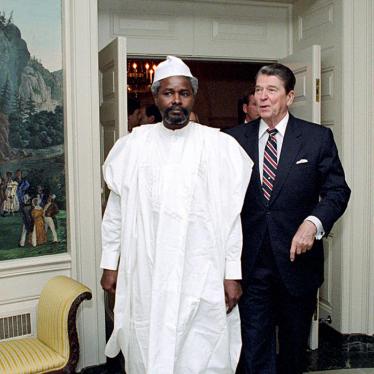
According to former U.S. Ambassador to Chad Donald Norland, Habré was “the creation of the Americans in no small measure.” He was valued for fighting the Libya-Chad War (1978-1987) against Muammar Qaddafi’s nationalist regime, though in 2015 was convicted of war crimes. A 1992 Truth Commission estimated that his government was responsible for more than 40,000 deaths.
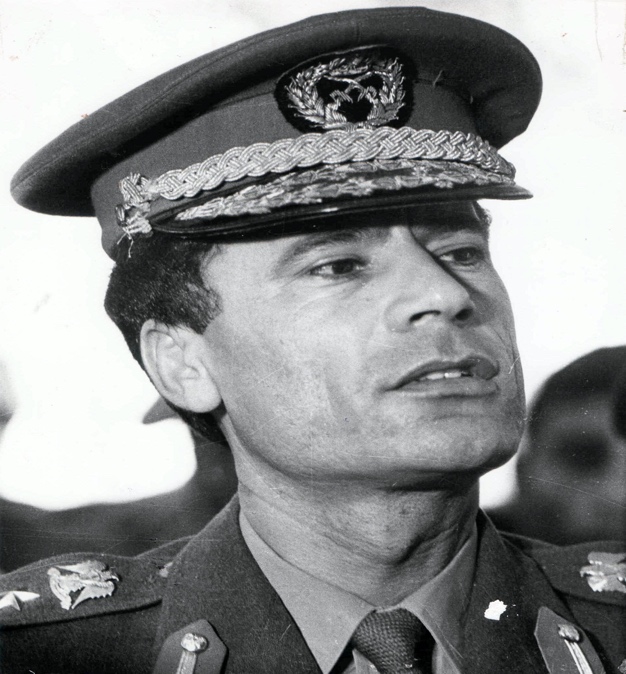
Human rights considerations did not factor high on the list of the Reagan administration, as it trained and financed Habré’s political police and created an army of anti-Qaddafi Libyan “Contras” from Libyan POWs, many of whom were coerced into joining.
One of the Contras who was turned in captivity was General Khalifa Hiftar, whom the CIA later recruited as part of anti-Qaddafi operations in 2011. Hiftar coerced people into joining his Contras by putting them in hot, windowless, crowded rooms with floors ankle-deep in sewage for long periods of time if they did not agree, resulting in at least twenty deaths over two months.[24]

The covert operations against Libya, coordinated in part in Liberia, culminated in an April 1986 assassination attempt against Qaddafi in which about 100 Libyan civilians were killed from aerial bombing.
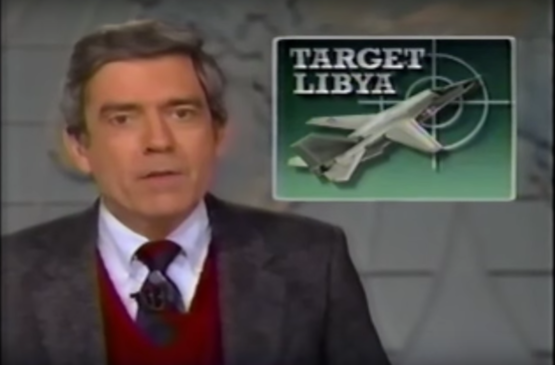
Switch to Taylor
By this time, the Reagan administration had begun to sour on Doe—who came to embrace Pan-African ideals and threatened to disavow treaty obligations allowing for the military facilities in Liberia. Doe was expected to make way for a civilian government in 1985 but rigged elections that year with U.S. acquiescence.[25]
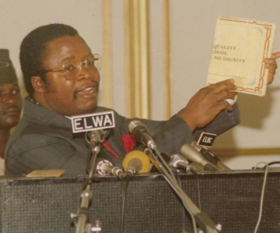
In a last-ditch effort to salvage Doe’s regime, the Reagan administration persuaded him to accept a team of 17 U.S. financial experts who were required to “sign all documents related to fiscal expenditure.”[26]
The U.S., around the same time, covertly began supporting the opposition led by Charles Taylor, who was paid by the CIA.[27]
Herman Cohen, the Assistant Secretary of State for African Affairs from 1989-1993 stated that “Doe’s departure and Taylor’s coming to power were the heart of . . . [the U.S.] policy.” Taylor further recalled that there “was full cooperation between me [the National Patriotic Front of Liberia] and Washington and every move we took, we consulted Washington first.”[28]
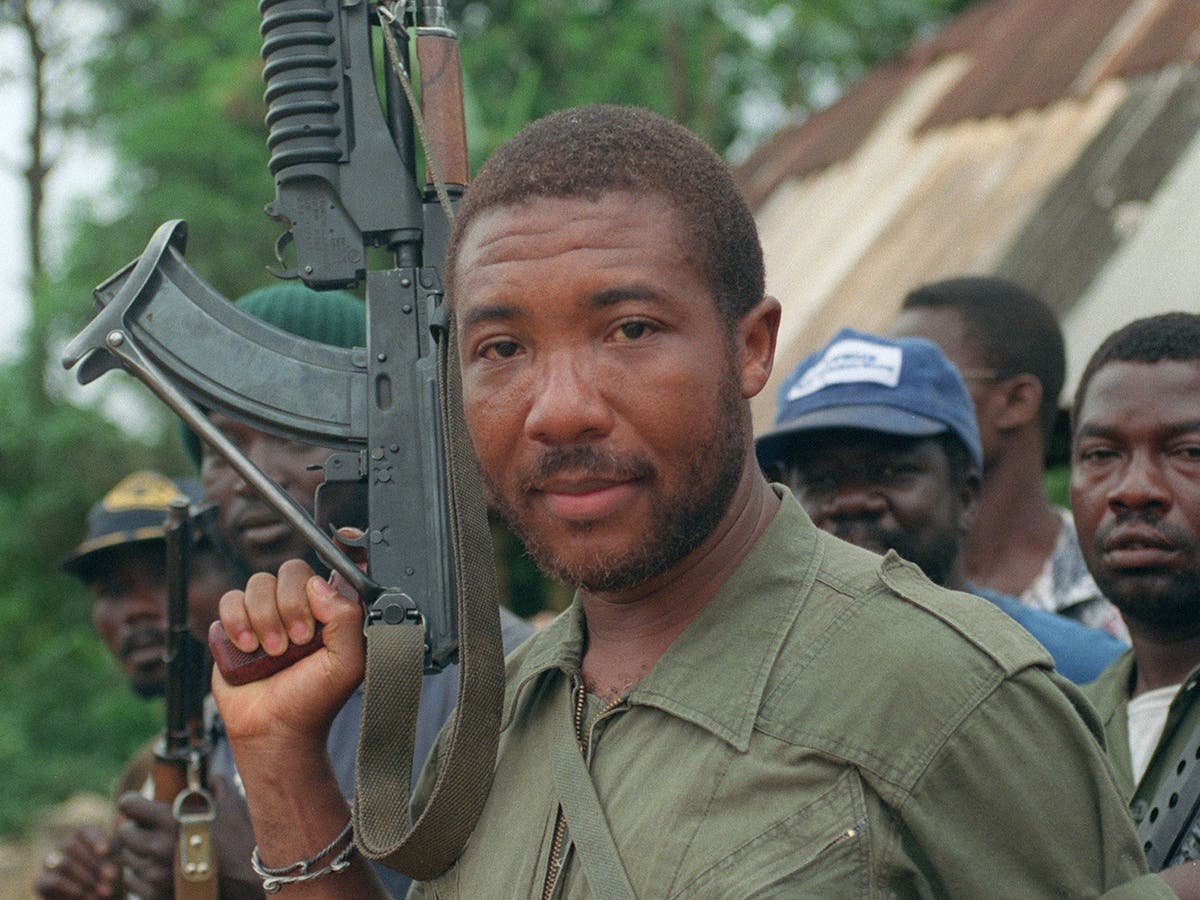
Educated at Bentley College outside of Boston, Taylor was a chief of government procurement under Doe who fled to the U.S. after he was accused of stealing $900,000 from the state treasury. During the “rice riots” against Tolbert, Taylor was arrested after insisting on Tolbert’s resignation while occupying the Liberian Permanent Mission in Washington, D.C.[29]
At the time he was a member of a student group that opposed Tolbert and harassed his entourage during a visit to the U.S. Members of his group even carried Tolbert in a mock coffin.[30]
In November 1985 the CIA, in Taylor’s telling, assisted his escape from a Plymouth, Massachusetts, prison days before Taylor’s friend, Thomas Quiwonkpa, who had lived in the Washington, D.C., suburbs, launched a coup against Doe that was financed and backed by the CIA.[31]
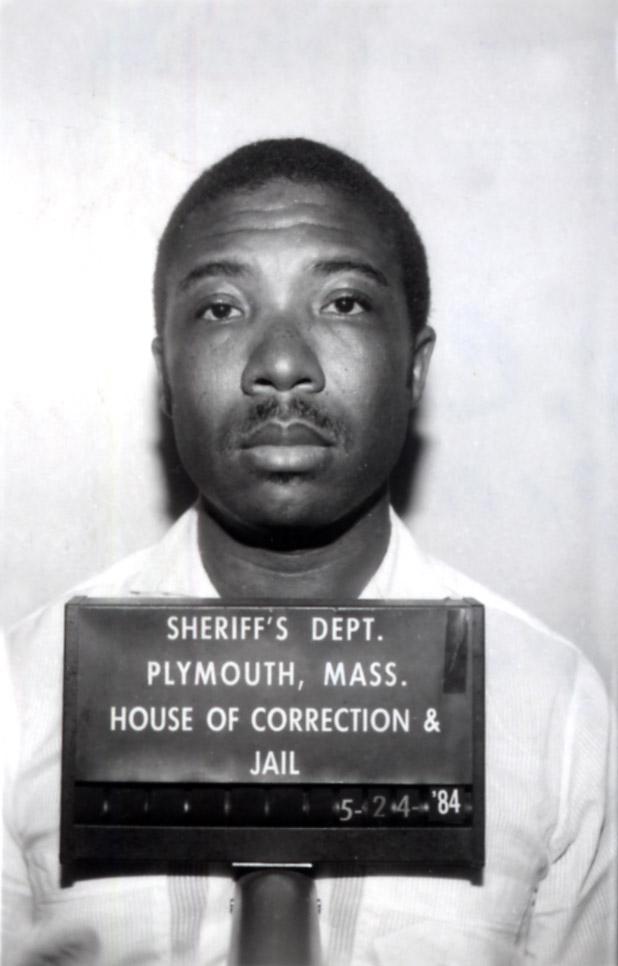
Taylor afterwards returned home to lead an armed insurgency, National Patriotic Front of Liberia (NPFL), with backing from Libya, Ivory Coast and Burkino Faso.
Taylor claimed to have undergone military training in Ghana, which would have been at a CIA clandestine camp.
He re-entered Liberia with his group of mercenaries in the company of U.S. Special Forces, as was reported by eyewitnesses. When U.S. Peace Corps volunteers mounted a protest, they were sent home.[32]
On the surface, the U.S. government appeared to be weary of Taylor because of his support from Muammar Qaddafi,[33] though an investigation by an Italian filmmaker determined that Taylor was sent by the CIA to infiltrate African liberation movements in Libya in return for CIA sponsorship of his insurgency.[34]
The Horror, the Horror, the Horror
The CIA’s depredations in Liberia helped to lay the groundwork for the horrors of Liberia’s civil war in the 1990s, which resulted in over 250,000 deaths (possibly as many 500,000-800,000) and destroyed the country’s infrastructure, leaving it without electricity, running water or sewage systems.
In September 1990, Doe was tortured and then killed by rebels associated with a breakaway faction of the NPFL led by Prince Yormie Johnson, a defector from Doe’s regime who afterwards was said to have returned to a CIA training camp in Nigeria.[35]
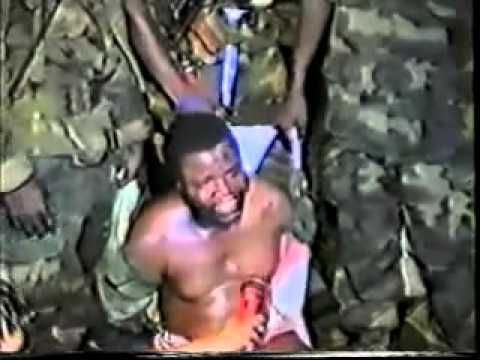
This vile act—carried out under the eyes of the American embassy in Monrovia without consequence for the perpetrators—triggered Liberia’s descent into war, which lasted until 1997.
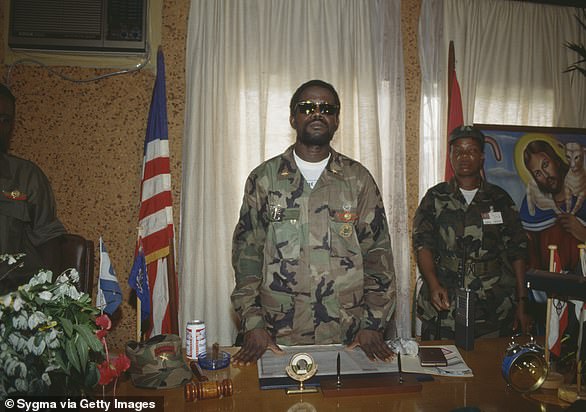
Firestone Rubber at this time paid Taylor millions of dollars in exchange for him being able to return to Liberia and allowed Taylor to turn an old Firestone plantation into a military base.[36]
When U.S. Ambassador to Liberia Peter Jon de Vos (1990-1992) scheduled a meeting with Taylor, he brought Firestone plantation General Manager Donald Ensminger with him. Taylor, upon seeing Ensminger, asked de Vos: “he works for the embassy now?” De Vos replied that it was the other way around: “America works for Firestone.”[37]

According to Alexander Yearsley, an investigator in West Africa with the NGO Global Witness, Taylor was “advised [by the U.S.] on how to carry out the conflict [in Liberia],” though eventually the U.S. government distanced themselves from him when he helped ruin the country and U.S. strategic facilities were closed down.[38]
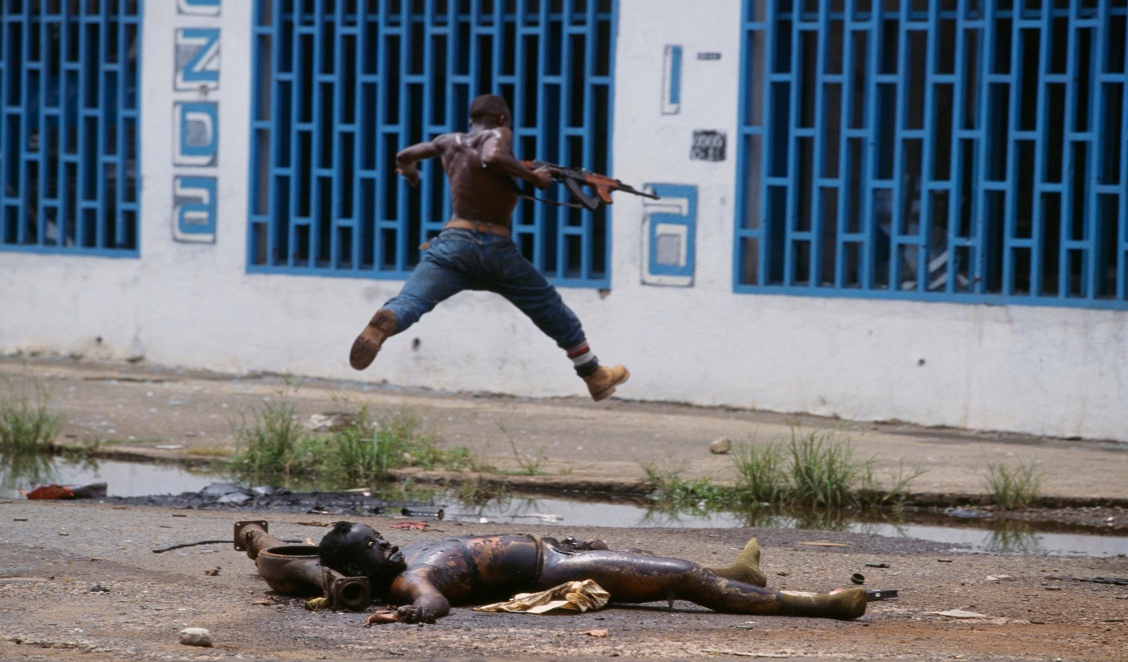
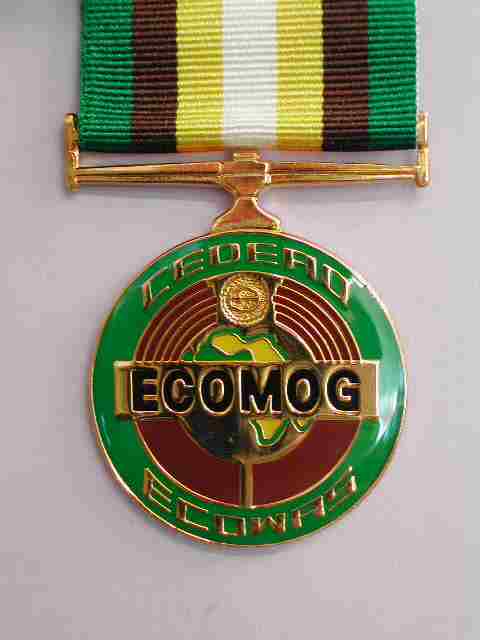
The Clinton administration helped finance a Western African-led peacekeeping force known as ECOMOG (Economic Community of West African States Monitoring Group), which allied with the Armed Forces of Liberia (AFL) and United Liberation Movement for Democracy in Liberia (ULIMO) consisting primarily of Doe loyalists from his ethnic Khran and Mandingo ethnic groups.
Taylor’s forces (NPFL) by contrast included ethnic Gio from Nimba County who had legitimate scores to settle with Doe, and Americo-Liberians.[39]
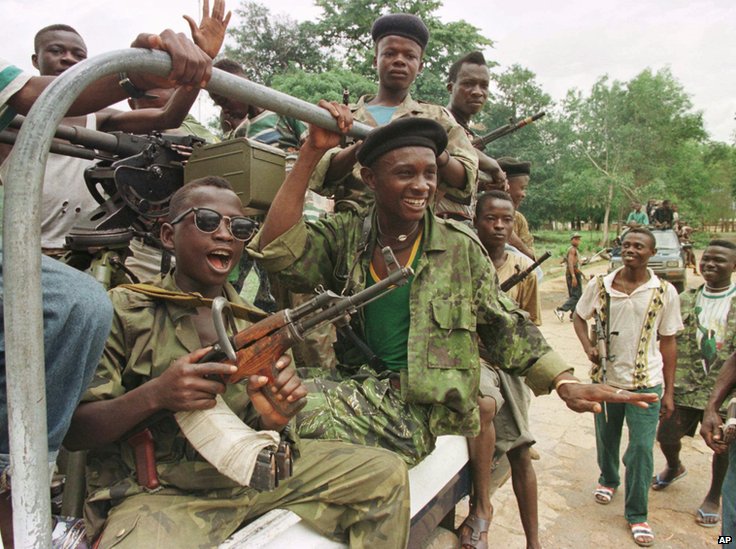
According to Prince Johnson, in October 1987, Taylor conspired with Burkino Faso’s Minister of State Blaise Compaoré and Ivory Coast President Félix Houphouët-Boigny (whose daughter was married to Compaoré) to assassinate Thomas Sankara, Burkino Faso’s leftist leader who had vowed that his country would not be used as a platform to destabilize Liberia.
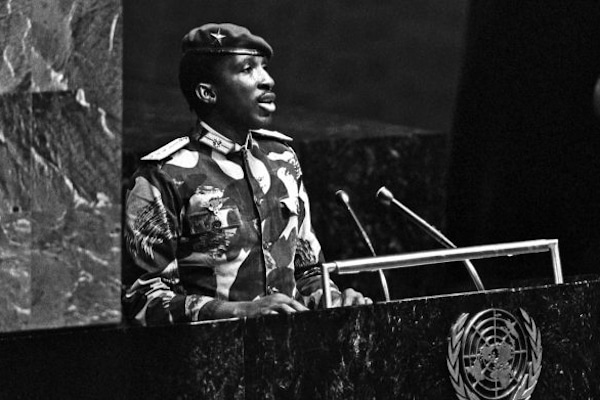
Taylor had been exiled in Burkino Faso after his prison escape in the U.S. According to Johnson, the CIA had infiltrated the NPFL and convinced the NPFL leadership and Compaoré—who ruled Burkino Faso from 1987 to 2014—that Sankara had to be assassinated. The United States wanted this because of Sankara’s socialist and Pan-African policies.[40]
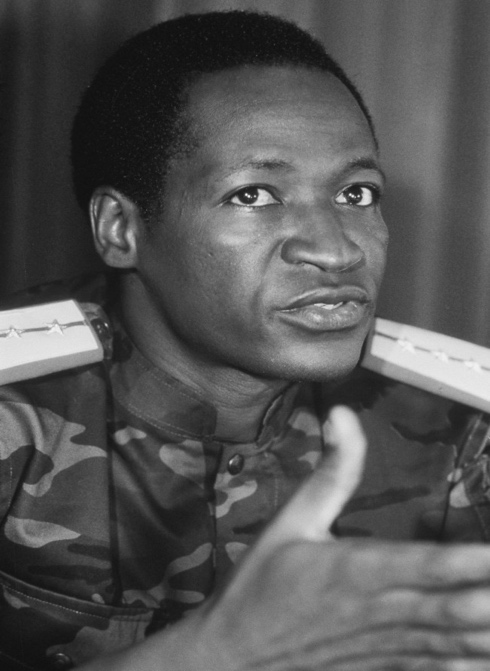

During Liberia’s civil war, Taylor earned notoriety for recruiting child soldiers, and was accused of extracting more than $421 million a year in diamonds, gold, iron ore and timber.[41] Horrific atrocities occurred on all sides of the war. In June 2021, ULIMO commander Alieu Kosiah pled guilty to the murder of civilians along with rape, cruelty to civilians and using child soldiers.[42]
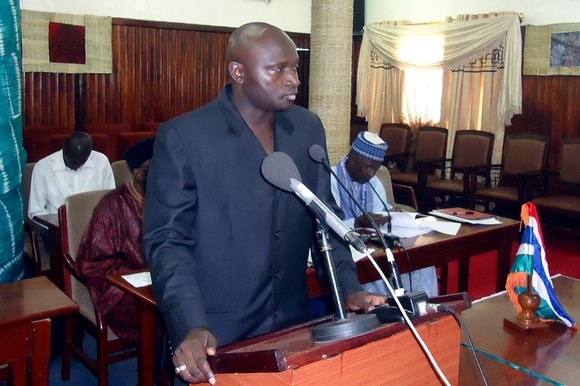
ECOMOG forces—consisting largely of Nigerian troops, many trained by the U.S. military or CIA—bombed and strafed villages and engaged in serious acts of vandalism and looting. They were accused of providing a cover for Doe supporters and a Nigerian occupation of Liberia, as Taylor alleged.[43]
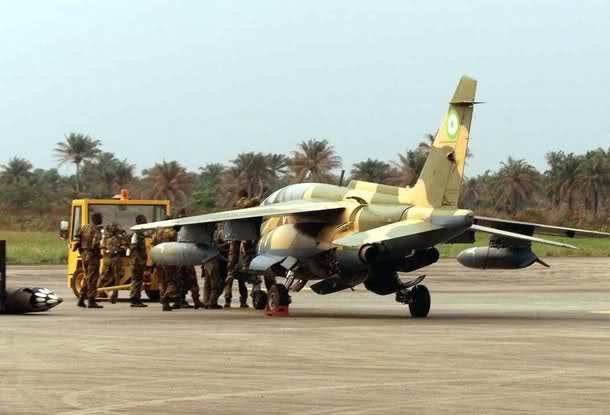
The Clinton administration provided ECOMOG with more than $85 million between 1993 and 1998, including $35.6 million in 1996.[44] Further covert support was provided with the deployment of mobile training teams to regional countries that staffed ECOMOG, such as Nigeria and Senegal, and provision of military equipment from Pentagon stocks along with $230 million in humanitarian assistance.[45]
Prince Johnson stated that it was “written all over that ECOMOG was made in America.”[46]
Prior to his death, Doe compared events in Liberia with Ghana in 1966 when the CIA overthrew Kwame Nkrumah. He told General Arnold Kwenu, force commander of ECOMOG, that the United States would not allow any African country to develop but would keep the countries indebted and dependent on aid and impose Open Door policies everywhere to exploit the continent.
Because he was trying to change the neocolonial relationship, the U.S. had sought his removal by using ECOMOG as a proxy force—and would continue to destabilize the country thereafter.[47]
Recolonization
In 1997, Charles Taylor won elections that marked a formal end to Liberia’s civil war. One of Taylor’s campaign slogans was “he killed my ma, and my pa, I’ll vote for him.”
The CIA had worked against Taylor by establishing an anti-Taylor radio station funded through USAID, which supported former World Bank employee Ellen Johnson Sirleaf and leaked information about Taylor’s support for Revolutionary United Front (RUF) rebels in Sierra Leone by trading arms for “blood diamonds.”[48]
After the election, the Clinton administration warmed to Taylor, who spent $630,000 between September 1997 and April 1999 on the firm of a powerful Washington, D.C., lawyer, Lester Hyman, the former chairman of the Democratic Party in Massachusetts, in an attempt to burnish his public image.

Though occasionally mouthing socialist rhetoric, Taylor was at his core pro-American, requesting the re-establishment of the defunct American military mission at the Ministry of Defense.[49] In 2001, however, he angered the U.S. government by refusing an exploitative agreement with Halliburton for oil exploration, stating that “Liberia is not for sale.”[50]
Strangely, one of Taylor’s biggest boosters in the U.S. was civil rights icon Jesse Jackson.
In March 1998, Clinton rewarded Taylor with a 30-minute call from Air Force One which he made at Jackson’s request. Jackson subsequently hosted a $400,000 reconciliation conference at the PUSH headquarters in Chicago, which was considered by the exile-Liberian community a “slick scheme to promote Taylor and his repressive government.”
African journalist Tom Kamara wrote that “Reverend Jackson is considered a civil rights leader in America, but in Africa, he is a killers’ rights leader.”[51]
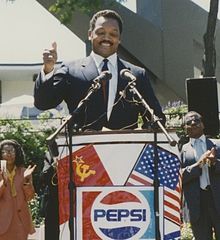
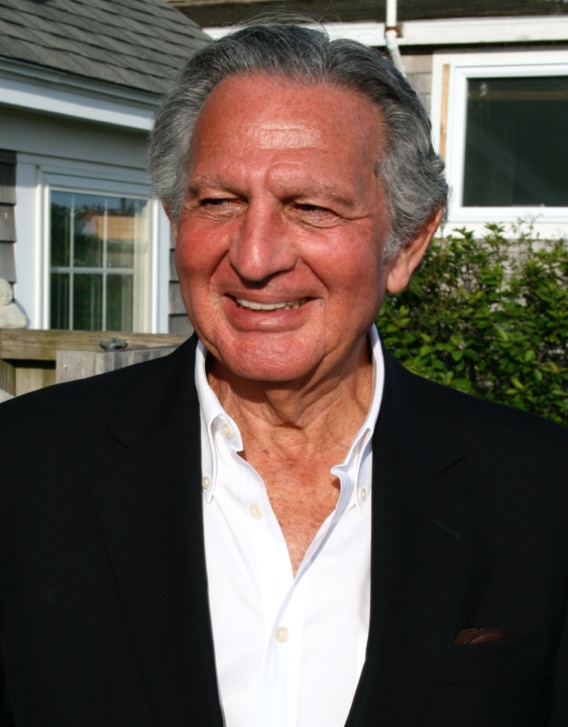
Despite the loss if its strategic facilities, the U.S. government at this time still valued Liberia because of its mineral wealth and the potential for exploiting its oil resources—West Africa was expected to be one of the fastest growing sources of oil and gas for the American market.[52]
The Bush administration worked to undermine Taylor’s government through a demonization campaign, by applying UN sanctions and by covertly arming insurgents that included pro-Doe elements, while threatening military intervention against him.[53]
In August 2003, Taylor was forced to resign under pressure and was indicted and later convicted by the International Criminal Court (ICC) for supporting war crimes in Sierra Leone. With his removal, Liberia fell under de facto U.S. administration, with its armed forces rebuilt under Pentagon supervision.[54]
Taylor’s successor, Ellen Johnson Sirleaf (2006-2018), Tolbert’s former finance minister who once gave a bombshell speech criticizing corporate exploitation, offered Liberian territory for the headquarters of AFRICOM, the only African leader to do so.[55]
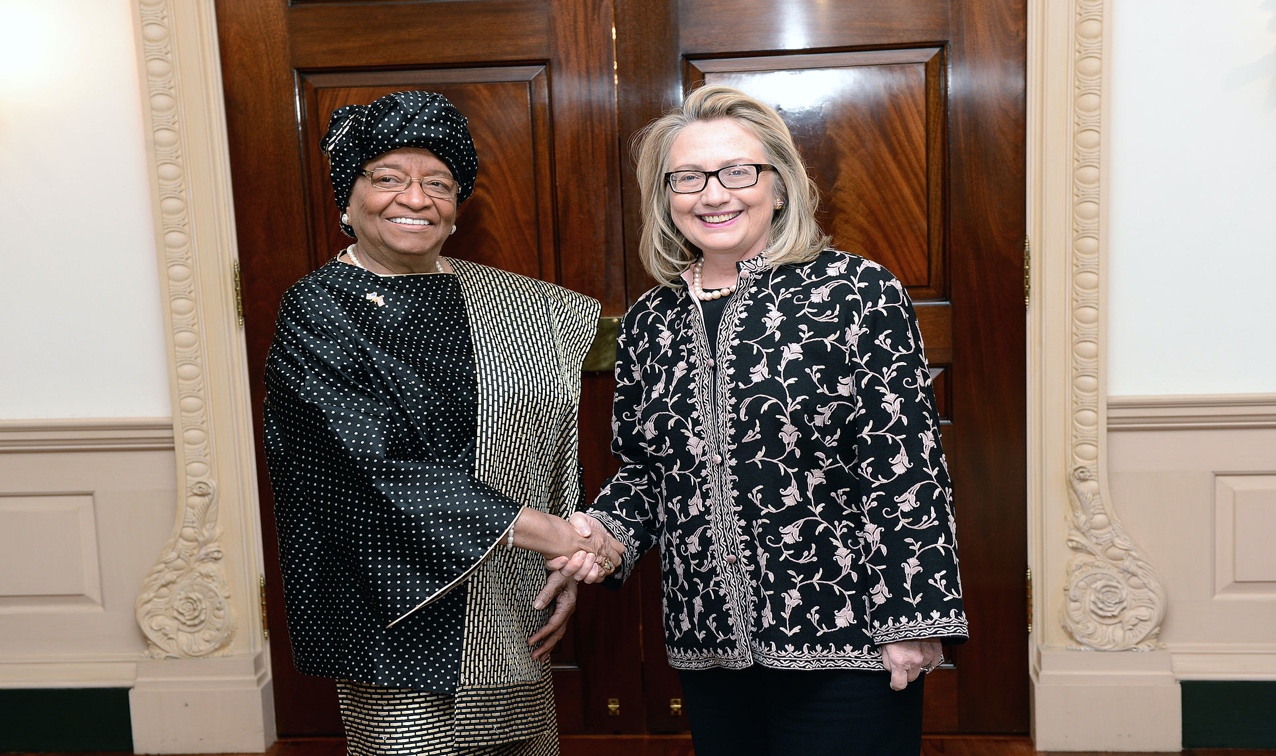
The CIA under Sirleaf’s rule retained a major presence operating within the confines of the American embassy. A member of the U.S. embassy staff told a Liberian diplomat that there was no way that the Americans ever would close down the embassy in Monrovia because “it would cost $50 million to take out all the equipment we have there.”[56]
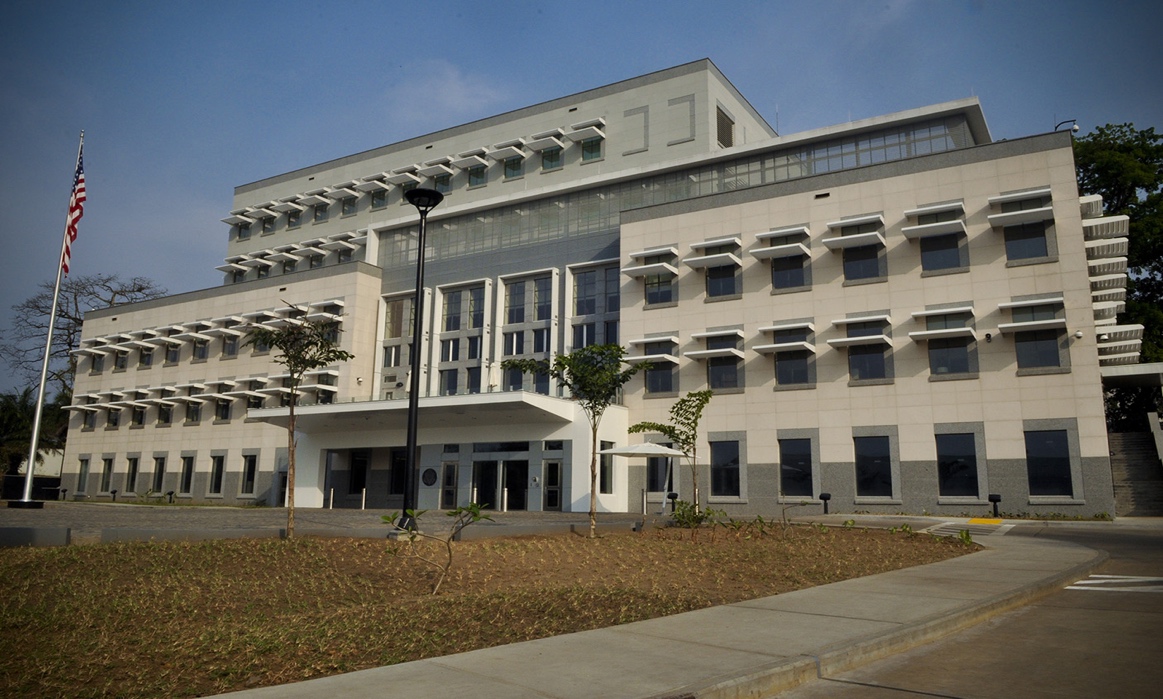
Killing Hope
A number of popular analysts and academics have presented the Liberian conflict of the 1990s as being rooted in religion, barbarism, and greed, while marginalizing the importance of outside powers like the U.S.
British historian Niall Ferguson promoted the conventional view in the early 2000s that, as a “failed state,” Liberia would benefit from U.S. colonial administration.
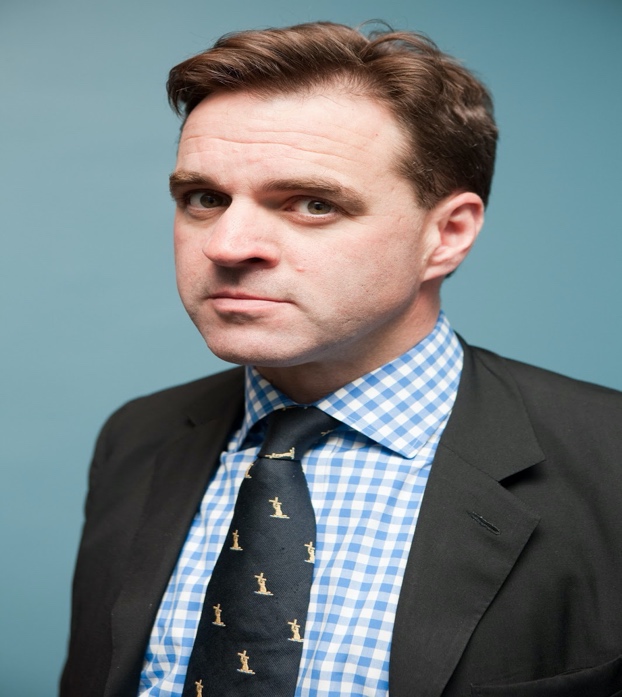
In truth, Liberia has suffered greatly from U.S. intervention—which resulted in gross economic exploitation, environmental despoliation because of the conversion of Liberia’s rich forests into rubber plantations, and political destabilization and violence.
When William Tolbert was putting Liberia on a better footing, the CIA worked to undermine him. It then backed the violent coup led by Doe whose misrule set the groundwork for Liberia’s devastating civil war, during which time the CIA switched to backing Charles Taylor before turning against him too.
In his book, Killing Hope: U.S. Military and C.I.A. Interventions Since World War II (1998), historian William Blum details the horrific toll of CIA manipulation and interference in foreign nations.[57]
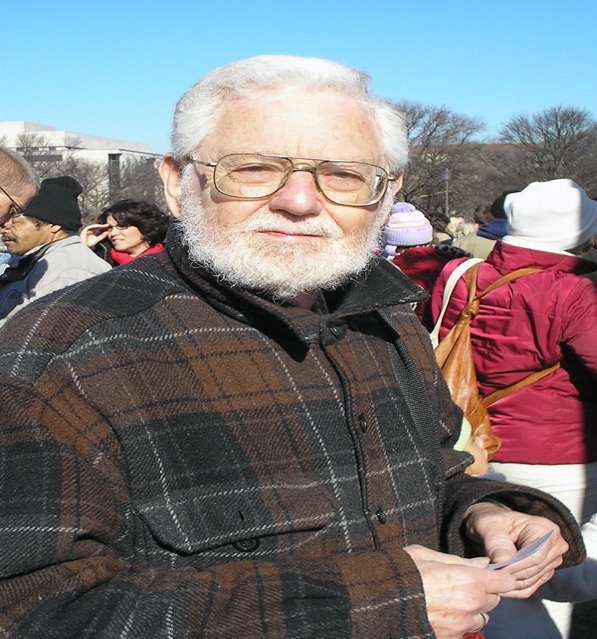
Liberia offers another important case study that helps validate his thesis.
The country’s recent history points to the need for a grass-roots movement in the U.S. to abolish the CIA and end foreign meddling so that the nightmare of its people is not repeated.

-
“Liberia Reflections: How Doe Became a Dictator,” https://frontpageafricaonline.com/amp/opinion/liberia-reflections-how-doe-became-a-dictator/ ↑
-
Sadie L. DeShield and Leonard T. DeShield, Beneath the Cold War: The Death of a Nation (Chapel Hill, NC: Professional Press, 1999), 145. ↑
-
Niels Hahn, “U.S. Covert and Overt Operations in Liberia, 1970s to 2003,” Air & Space Power Journal – Africa & Francophonie—3rd Quarter 2014, https://www.airuniversity.af.edu/Portals/10/ASPJ_French/journals_E/Volume-05_Issue-3/Hahn_e.pdf ↑
-
DeShield and DeShield, Beneath the Cold War, 88, 97, 240, 241. Israeli Mossad agents also provided training to Doe’s operatives. Among the victims of Doe’s reign of terror was a U.S.-trained Ranger with close ties to the U.S. military mission, William Jarbo, who fell into the embassy’s bad books because he developed left-wing views. ↑
-
Hahn, “U.S. Covert and Overt Operations in Liberia, 1970s to 2003.” ↑
-
Herman J. Cohen, Intervening in Africa: Superpower Peacemaking in a Troubled Continent (New York: St. Martin’s Press, 2000), 128. Cohen notes that the U.S. had paid a ridiculously low rent of $10 per year. ↑
-
Blaine Harden, “Who Killed Liberia? We Did,” The Washington Post, May 26, 1996; Arthur I. Hayman and Harold Preece, Lighting Up Liberia (New York: Creative Age Press, 1943); Karl Bruno, “The Technopolitics of Swedish iron mining in Cold War Liberia, 1950-1990,” The Extractive Industries and Society, 7, 1 (January 2020), 39-49. The bill for the Firestone agreement was introduced in the Liberian Senate by William Tubman, who became a staunchly pro-American leader of Liberia from 1944 to 1971. ↑
-
DeShield and Deshield, Beneath the Cold War; Bruno, “The Technopolitics of Swedish iron mining in Cold War Liberia, 1950-1990,” Niels Hahn, Two Centuries of US Military Operations in Liberia: Challenges of Resistance and Compliance (Maxwell Air Force Base, Alabama: Air University Press, 2020), 97. Tolbert promoted a policy of Liberianization that strove to have Liberians wield greater economic influence and power. He also urged a major mining conglomerate, the Liberian-American Swedish Mining Company (LAMCO)—owned partially by Bethlehem Steel—to improve its labor policies and pushed for wage raises in the midst of growing worker militancy. ↑
-
DeShield and DeShield, Beneath the Cold War, 41; Hahn, “U.S. Covert and Overt Operations in Liberia, 1970s to 2003.” Matthews later had a falling out with Doe and was appointed Foreign Minister under Amos Sawyer who served as interim president after Doe’s death. In line with his earlier CIA affiliation, Matthews was vital in bringing ECOMOG into Liberia. ↑
-
Former general secretary of PAL, Marcus Dahn, stated that, when looking back, it is likely that PAL was infiltrated by the CIA because “the Americans felt angry” regarding Tolbert who, “in the heat of the Cold War invited communist countries into Liberia.” ↑
-
DeShield and DeShield, Beneath the Cold War, 199-206, 211, 212. ↑
-
DeShield and DeShield, Beneath the Cold War, 203. ↑
-
Some people in the Tolbert administration believed that some of the security officers that shot at the demonstrators had received orders from the CIA. ↑
-
DeShield and DeShield, Beneath the Cold War, 204. ↑
-
DeShield and DeShield, Beneath the Cold War, 205. ↑
-
DeShield and DeShield, Beneath the Cold War, 187-190. ↑
-
Hahn, Two Centuries of US Military Operations in Liberia, 105. ↑
-
DeShield and DeShield, Beneath the Cold War, 246. On a visit to South Korea—a key U.S. Cold War proxy—Doe was awarded an honorary doctorate degree by the University of Seoul even though he never even graduated from elementary school! ↑
-
“Liberian Chief Samuel Doe Gets Cool Reception in U.S.,” Jet Magazine, September 6, 1982, 29. One journalist joked with Reagan that he should not go to the beach with Doe—a reference to the killings of Tolbert’s cabinet ministers on the beach after the 1980 coup. ↑
-
Hahn, Two Centuries of US Military Operations in Liberia, 110, 111. ↑
-
Cohen, Intervening in Africa, 128; Hahn, “U.S. Covert and Overt Operations in Liberia, 1970s to 2003”; Hahn, Two Centuries of US Military Operations in Liberia. ↑
-
Lester S. Hyman, United States Policy Towards Liberia 1822-2003: Unintended Consequences? (Cherry Hill, NJ: Africana Homestead Legacy Publishers, 2003), 41. ↑
-
Philip Taubman, “Casey and his CIA on the Rebound,” The New York Times, January 16, 1983, https://www.nytimes.com/1983/01/16/magazine/casey-and-his-cia-on-the-rebound.html ↑
-
Another recruit, Dr. Mohammed Youssef Magarief, became Libya’s first president after Qaddafi’s overthrow and lynching in 2011 following the U.S.-NATO Operation Odyssey Dawn. The CIA was said to have had a strong presence at Camp Douguia, the nerve center of the Contra operation in a suburb of N’Djamena. ↑
-
Assistant Secretary of State Chester Crocker called the Liberian election a “remarkable achievement.” ↑
-
Hahn, Two Centuries of US Military Operations in Liberia, 117. ↑
-
S. Byron Tarr, “Extra-Africa Interests in the Liberian Conflict,” in Peacekeeping in Africa: ECOMOG in Liberia, Karl P. Magyar and Earl Conteh-Morgan, eds. (New York: St. Martin’s Press, 1998), 155; George Klay Kieh, Jr., The First Liberian Civil War (New York: Peter Lang, 2008); “Charles Taylor ‘worked’ for CIA in Liberia,” BBC, January 19, 2012. ↑
-
Hahn, Two Centuries of US Military Operations in Liberia, 123. ↑
-
Hahn, Two Centuries of US Military Operations in Liberia, 99. Liberian exile groups in the U.S. were used by the CIA to create hostile public opinion toward Tolbert’s regime as part of its regime-change designs. The media furthered the hostility through negative broadcasting. A 60 Minutes feature airing before the coup, for example, was highly critical of Tolbert. ↑
-
DeShield and DeShield, Beneath the Cold War, 265. ↑
-
Tracey Gurd, “Taylor Alleges US Govt Helped Him Escape From Prison,” International Justice Monitor, July 15, 2009, https://www.ijmonitor.org/2009/07/taylor-alleges-us-govt-helped-him-escape-from-us-prison/; “Charles Taylor ‘worked’ for CIA in Liberia,” BBC, January 19, 2012; Marlise Simons, “Ex-Leader of Liberia Cites CIA in Jail Break,” The New York Times, July 17, 2009; Chris Arsenault, “Accused war criminal Taylor ‘worked with CIA,” Al Jazeera, January 20, 2012, https://www.aljazeera.com/indepth/features/2012/01/2012120194243233526.html. In 2009, during testimony at his war crimes trial, Taylor said a jail guard opened his cell door and allowed him to sneak out a window. He then claimed a “government car” drove him to New York, before he made his way to Mexico and eventually back to Liberia. Lester Hyman, in United States Policy Towards Liberia 1822-2003, questions whether Taylor actually stole the money that landed him in jail on embezzlement charges. ↑
-
DeShield and DeShield, Beneath the Cold War, 266. ↑
-
Hyman, United States Policy Towards Liberia 1822-2003, 42, 44, 45. ↑
-
https://www.thomassankara.net/assassination-of-thomas-sankara-evidence-of-a-documentary-by-rai-3-involve-france-cia-and-blaise-compaore/?lang=en ↑
-
DeShield and DeShield, Beneath the Cold War, 268. Some suggest that the real Prince Johnson was killed and that his identity was taken by a mercenary. ↑
-
Patrice Taddonia, “How We Uncovered Firestone’s Deal with Charles Taylor,” PBS, November 18, 2014, https://www.pbs.org/wgbh/frontline/article/how-we-uncovered-firestones-deal-with-charles-taylor/; “Firestone and the Warlord,” https://www.pbs.org/wgbh/frontline/film/firestone-and-the-warlord/. ↑
-
“Firestone and the Warlord,” https://www.pbs.org/wgbh/frontline/film/firestone-and-the-warlord/. ↑
-
Arsenault, “Accused war criminal Taylor ‘worked with CIA”; Hahn, “U.S. Covert and Overt Operations in Liberia, 1970s to 2003.” The U.S. made alternative arrangements for these facilities to move them to other parts of Africa with the destruction in Liberia caused by the civil war. See also Cohen, Intervening in Africa, chapter 5. Some suggest that the U.S. eventually turned on Taylor because it did not want an Americo-Liberian to rule the country. Cohen is largely favorable toward Taylor and says the U.S. should have gone forward with negotiations to bring him to power as Doe’s tenure neared its end, which could have avoided a civil war. ↑
-
DeShield and DeShield, Beneath the Cold War, 267. Taylor’s mother was an ethnic Gola and his father was an Americo-Liberian. He was born in Liberia in 1948. ↑
-
Hahn, Two Centuries of US Military Operations in Liberia, 121. On the assassination of Sankara, see also Ernest Harsch, Thomas Sankara: An African Revolutionary (Athens: Ohio University Press, 2014). ↑
-
Mungo Soggot and Phillip Van Niekirk, “The Adventure Capitalist: While Africa’s wars have brought untold misery to millions, some have seen conflict in the region as a business opportunity,” International Consortium of Investigative Journalists, November 11, 2002, https://www.icij.org/investigations/makingkilling/adventure-capitalist/ ↑
-
Nick Cumming-Bruce, “Ex-Warlord Sent to Prison for Atrocities in Liberia,” The New York Times, June 20, 2021. Another former ULIMO commander at the time was being tried in France for murder, torture, rape and other atrocities. Yet another ULIMO commander, Mohammed “Jungle” Jabateh, who was convicted in the U.S. of defrauding immigration authorities, was accused of war crimes and cannibalism. ↑
-
Liberia: Waging War to Keep the Peace: The ECOMOG Intervention and Human Rights, June 1993, https://www.hrw.org/reports/1993/liberia/; Cohen, Intervening in Africa, 157. One report had ECOMOG using cluster bombs on NPFL positions at Harbel. Karl P. Magyar, “ECOMOG’s Operations: Lessons for Peacekeeping,” in Peacekeeping in Africa, Magyar and Conteh-Morgan, eds., 69; DeShield and DeShield, Beneath the Cold War, 272. Nigeria was then ruled by dictator Sani Abacha. ↑
-
Hahn, “U.S. Covert and Overt Operations in Liberia, 1970s to 2003.” ↑
-
Hahn, “U.S. Covert and Overt Operations in Liberia, 1970s to 2003,” note 76; Cohen, Intervening in Africa, 158. ↑
-
Hahn, Two Centuries of US Military Operations in Liberia, 133. The U.S. supported Prince Johnson when he broke from Taylor and the NPFL but switched to supporting ECOMOG when they realized that Johnson’s group was not strong enough to gain power. ↑
-
Hahn, Two Centuries of US Military Operations in Liberia, 134. ↑
-
Hahn, Two Centuries of US Military Operations in Liberia, 156. ↑
-
Hahn, Two Centuries of US Military Operations in Liberia 161. ↑
-
Hahn, Two Centuries of US Military Operations in Liberia, 164. ↑
-
Kenneth R. Timmerman, Shakedown: Exposing the Real Jesse Jackson (Washington, D.C.: Regnery, 2002); Ryan Lizza, “Where Angels Fear to Tread,” The New Republic, July 23, 2000, https://newrepublic.com/article/64215/where-angels-fear-tread ↑
-
Hahn, “U.S. Covert and Overt Operations in Liberia, 1970 to 2003.” ↑
-
Hyman, United States Policy Towards Liberia, 1822-2003, ch. 6, 7. The demonization campaign extended to the U.S. media. Jon Lee Anderson wrote of Taylor in The New Yorker that he made Samuel Doe “look like a Disney character,” which is an exaggeration. Jon Lee Anderson, “Charles Taylor and the Killing Tree,” The New Yorker, April 26, 2012, https://www.newyorker.com/news/news-desk/charles-taylor-and-the-killing-tree ↑
-
Hahn, Two Centuries of US Military Operations in Liberia, xii. ↑
-
Hahn, Two Centuries of US Military Operations in Liberia, 211, 212; Ellen Johnson Sirleaf, “Africa: AFRICOM Can Help Governments Willing to Help Themselves,” June 25, 2007, https://allafrica.com/stories/200706251196.html. In the 1970s, Sirleaf had been a member of MOJA which espoused Pan-African views but then opposed Tolbert before being appointed finance minister. As Liberia’s president, she became close to George W. Bush and allowed Chevron to establish three offshore oil concessions, though she developed closer ties between Liberia and China and supported Liberia’s industrialization. Liberia partnered with AFRICOM under Sirleaf’s direction though AFRICOM set up its headquarters in Stuttgart Germany after South African President Thabo Mbeki mobilized the continent against it, stating that basing it in any African country would be a violation of the continent’s sovereignty.↑
-
Hyman, United States Policy Towards Liberia 1822-2003, 42.
-
William Blum, Killing Hope: U.S. Military and C.I.A. Interventions Since World War II (Monroe, ME: Common Courage Press, 1998). ↑
CovertAction Magazine is made possible by subscriptions, orders and donations from readers like you.
Blow the Whistle on U.S. Imperialism
Click the whistle and donate
When you donate to CovertAction Magazine, you are supporting investigative journalism. Your contributions go directly to supporting the development, production, editing, and dissemination of the Magazine.
CovertAction Magazine does not receive corporate or government sponsorship. Yet, we hold a steadfast commitment to providing compensation for writers, editorial and technical support. Your support helps facilitate this compensation as well as increase the caliber of this work.
Please make a donation by clicking on the donate logo above and enter the amount and your credit or debit card information.
CovertAction Institute, Inc. (CAI) is a 501(c)(3) non-profit organization and your gift is tax-deductible for federal income purposes. CAI’s tax-exempt ID number is 87-2461683.
We sincerely thank you for your support.
Disclaimer: The contents of this article are the sole responsibility of the author(s). CovertAction Institute, Inc. (CAI), including its Board of Directors (BD), Editorial Board (EB), Advisory Board (AB), staff, volunteers and its projects (including CovertAction Magazine) are not responsible for any inaccurate or incorrect statement in this article. This article also does not necessarily represent the views the BD, the EB, the AB, staff, volunteers, or any members of its projects.
Differing viewpoints: CAM publishes articles with differing viewpoints in an effort to nurture vibrant debate and thoughtful critical analysis. Feel free to comment on the articles in the comment section and/or send your letters to the Editors, which we will publish in the Letters column.
Copyrighted Material: This web site may contain copyrighted material the use of which has not always been specifically authorized by the copyright owner. As a not-for-profit charitable organization incorporated in the State of New York, we are making such material available in an effort to advance the understanding of humanity’s problems and hopefully to help find solutions for those problems. We believe this constitutes a ‘fair use’ of any such copyrighted material as provided for in section 107 of the US Copyright Law. You can read more about ‘fair use’ and US Copyright Law at the Legal Information Institute of Cornell Law School.
Republishing: CovertAction Magazine (CAM) grants permission to cross-post CAM articles on not-for-profit community internet sites as long as the source is acknowledged together with a hyperlink to the original CovertAction Magazine article. Also, kindly let us know at info@CovertActionMagazine.com. For publication of CAM articles in print or other forms including commercial internet sites, contact: info@CovertActionMagazine.com.
By using this site, you agree to these terms above.
About the Author

Jeremy Kuzmarov holds a Ph.D. in American history from Brandeis University and has taught at numerous colleges across the United States. He is regularly sought out as an expert on U.S. history and politics for radio and TV programs and co-hosts a radio show on New York Public Radio and on Progressive Radio News Network called “Uncontrolled Opposition.”
He is Managing Editor of CovertAction Magazine and is the author of six books on U.S. foreign policy, including Obama’s Unending Wars (Clarity Press, 2019), The Russians Are Coming, Again, with John Marciano (Monthly Review Press, 2018), Warmonger. How Clinton’s Malign Foreign Policy Launched the U.S. Trajectory From Bush II to Biden (Clarity Press, 2023); and with Dan Kovalik, Syria: Anatomy of Regime Change (Baraka Books, 2025).
Besides these books, Kuzmarov has published hundreds of articles and contributed to numerous edited volumes, including one in the prestigious Oxford History of Counterinsurgency .
He can be reached at jkuzmarov2@gmail.com and found on substack here.


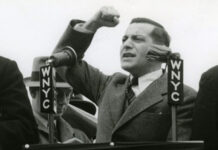
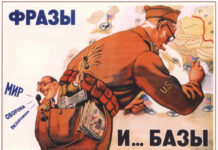
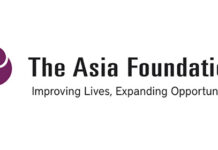
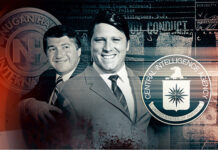
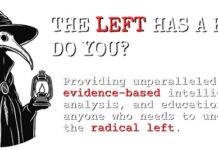
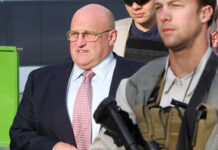



CIA has cause a lot those organizations are evil cult group
Americans are not everybody friends
To Vernon: I honestly do not get it. Here is an article about the murderous atrocities and insurrections committed by the United States against another nation and the only thing you can comment on is your interpretation of what is grammatically incorrect within the documentation???? Are you concerned with how the US exploited and destabilized African nations for their own capital gain? The comments you made about the author’s use of “helps ruin” is an expression that is also used by other contemporary writers. I would recommend reading the references that are listed at the end of this article for additional information concerning the US and its involvement in Africa. For additional information about Africa’s history read the following: Africa, Past and Present, by Arthur N. Cook and Africa in History by Basil Davidson.
OPEN LETTER TO THE EDITOR
Mr. Muzmarou:
This subject letter is written to thank you for helping the world to understand, what happened in Liberia the various actors who participated in the INHUMANE and GRUESOME MURDER of over 250 thousand innocent people, including pregnant women and infants whose desire for “Life, Liberty and the pursuit of happiness were cut short…..I am grateful that you captured in a detailed fashion the UGLY NIGHT MERE of 1990 to 2003, and I beg to defer with you about 1997, being the actual period our headaches ended. Having made this point, I strongly believe the actual death toll of Liberians and foreign troops were grossly understated; from my own experience, the actual figure is Five hundred thousand people, if not nearly 800,000 deaths OCCASIONED by senseless and indiscriminate massacre of my people. I hasten to therefore suggest, future writers use either figures herein contains a near accurate accounting of all deaths in the bushes, cars, farm and car roads and even in homes.
I read your entire article and herewith set the record straight as follows:
1. At no time did Leonard T. Deshield serve as Minister of Foreign Affairs; he was Deputy Chief of Protocol and subsequently Chief of Protocol of the Republic of Liberia.
2. Honorable Gabriel Bacchus Matthews at no time ever served as an INTERIM PRESIDENT of Liberia; immediately after he and his colleagues were freed, he was appointed President Samuel Kanyon Doe’s first Minister of Foreign Affairs.
I hope you will incorporate these information in your future article on Liberia, especially the Civil Crises; there were other things I read as regards Leonard T. Deshield’s account of the crises…..Moreover, the period you referred to as Leonard heading the Foreign Ministry is not true, because, the Minister at the time (1990) was Honorable C. Cicil Dennis who and twelve others were murdered in cold blood by FIRING SQUAD on the outskirts of the Barclay Training Center (BTC) precisely on the Beach.
Excellent article that covers an issue ignored.
I am not an expert in grammar but I am wondering if it is correct to say that one “helps ruin” something.
It would be okay to say ” I helped to save his life” but I am wondering if it is okay to say ” I helped ruin his life” as helping and ruining are like opposites”
You read an article about massive crimes caused by American meddling and pose a silly grammar question?